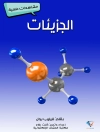Nodules produced on legume roots by root-nodule bacteria provide the major nitrogenous input into natural and agricultural systems worldwide. This book provides an in-depth and up-to-the minute analysis of what is known about this symbiosis, its origins, the process of nodule formation and development, and the biochemistry and genetics of nodular nitrogen fixation. It also reviews the physiology of the root-nodule bacteria themselves, their ecology in both natural and agricultural systems, and how we go about introducing new legumes and the bactria they require. How all the knowledge gained about this system can be applied in the future for better legume-rhizobia functioning in difficult environments is its logical culmination.
विषयसूची
Preface to the Series, Preface, List of Contributors, Dedication
1. Evolution and Diversity of Legume Symbiosis: J. I. Sprent
1. Introduction
2. The Diversity of Legume Nodules
3. The First 700 Million Years
4. The Last 60 Million Years
5. The Present
6. Conclusions
References
2. Ecology of Root-nodule Bacteria of Legumes: P. H. Graham
1. Introduction
2. Taxonomy of Root-nodule Bacteria
3. Population Structure of Rhizobia in Soil and Rhizosphere
4. Above and Below Ground Diversity and Symbiotic Function
5. Strain Competitiveness, Rhizosphere Colonization, and Persistence
6. Edaphic Factors Affecting Rhizobia
7. Future Dimensions of Rhizobial Ecology
References
3. Maintaining Cooperation in the Legume-Rhizobia Symbiosis: Identifying Selection Pressures and Mechanisms: E. T. Kiers, S. A. West and R. F. Denison
1. Introduction
2. Explaining Cooperation: The Problem
3. Explaining Cooperation: The Hypothesis
4. Cheating and Mixed Nodules
5. Future Directions
6. Conclusions
Acknowledgements
References
4. Inoculation Technology for Legumes: D. F. Herridge
1. Introduction
2. The Need to Inoculate
3. Selection of Rhizobial Strains for Use in Inoculants
4. Inoculants in the Market Place
5. Pre-inoculated and Custom-inoculated Seed
6. Co-inoculation of Legumes with Rhizobia and Other Beneficial Microorganisms
7. Quality Control of Legume Inoculants
8. Constraints to Inoculant Use and Future Prospects
9. Concluding Statements
References
5. Fine-tuning of Symbiotic Genes in Rhizobia: Flavonoid Signal Transduction Cascade: H. Kobayashi and W. J. Broughton
1. Introduction
2. NODD and NOD-boxes: Central Elements in Transduction of Flanovoid Signals
3. Functions of Genes Controlled by NOD-boxes4. Fine-tuning Expression of Symbiotic Genes in Restricted Host-Range Rhizobia
5. Post-genomic Studies: Do Flavonoids Regulate Other Genes?
6. Conclusion and Perspectives: Roles of Flavonoid-inducible Regulons in Symbiosis, Signaling, and Adaptation
References
6. Cell Biology of Nodule Infection and Development: N. Maunoury, A. Kondorosi, E. Kondorosi and P. Mergaert
1. Introduction
2. Nod-factor Signalling
3. Cortical-cell Activation Leading to Primordium Formation and Infection
4. Secondary Signals for Nod Factor-induced Cell Activation
5. Differentiation of N2-fixing Cells: The Role of Endoreduplication
6. Bacteroid Differentiation
7. Nitrogen Fixation
8. Senescence of Nodules
References
7. Genetics, A Way to Unravel Molecular Mechanisms Controlling the Rhizobial-Legume Symbiosis: P. Smit and T. Bisseling
1. Introduction
2. Model Legumes
3. Genetic Dissection of the Nod Factor-Signalling Pathway
4. Nature of the Nod-factor Receptors
5. The DMI Proteins
6. NSPs are Nod Factor-Response Factors
7. NIN is a Nod Factor-Response Factor
8. Autoregulation of Nodule Number
9. Concluding Remarks
References
8. Legume Genomics Relevant to N2 Fixation: L. Schauser, M. Udvardi, S. Tabata and J. Stougaard
1. Introduction
2. Genomes
3. Transcriptome Analysis
4. Proteomic
5. Metabolomics
6. Genetic Analysis Using Genomics
7. Comparative Genomics
8. Conclusions
References
9. Physiology of Root-nodule Bacteria: P. S. Poole, M. F. Hynes, A. W. B. Johnston, R. P. Tiwari, W. G. Reeve and J. A. Downie
1. Introduction
2. Introduction to Central Metabolism
3. Metabolism and the Environment
4. Micronutrition, Metals, and Vitamins
5. Environmental Responses of Rhizobia
6. Changes in Gene Expression in Bacteroids
7.Stress Responses in Rhizobia
References
10. Carbon and Nitrogen Metabolism in Legume Nodules: C. P. Vance
1. Legume Root Nodules are Carbon and Nitrogen Factories
2. Nodule Carbon Metabolism
3. Sucrose Synthase
4. Phosphoenolpyruvate Carboxylase
5. Carbonic Anhydrase
6. Malate Dehydrogenase
7. Initial Assimilation of Fixed-N
8. Glutamine Synthetase
9. Glutamate Synthase
10. Aspartate Aminotransferase
11. Asparagine Synthetase
12. Ureide Biosynthesis
13. Genomic Insights
14. Overview
References
11. Oxygen Diffusion, Production of Reactive Oxygen and Nitrogen Species, and Antioxidants in Legume Nodules: F. R. Minchin, E. K. James and M. Becana
1. Introduction
2. Physiological Evidence for a Variable Oxygen-diffusion Barrier
3. Structure of the Cortical Oxygen-diffusion Barrier
4. Development of the Cortical Oxygen-diffusion Barrier
5. Regulation of the Cortical Oxygen-diffusion Barrier
6. Infected Zone Control
7. Reactive Oxygen and Nitrogen Species in Nodules
8. Antioxidants in Nodules
9. Concluding Remarks
References
12. Prospects for the Future Use of Legumes: J. G. Howieson, R. J. Yates, K, Foster, D. Real and B. Besier
1. Introduction
2. Current and Past Legume-Usage Patterns
3. New Uses for Legumes
4. Matching Legumes and the Symbiosis to Edaphic and Economic Factors
5. Utilising the Basic Advances
6. Conclusions
References
Subject Index












